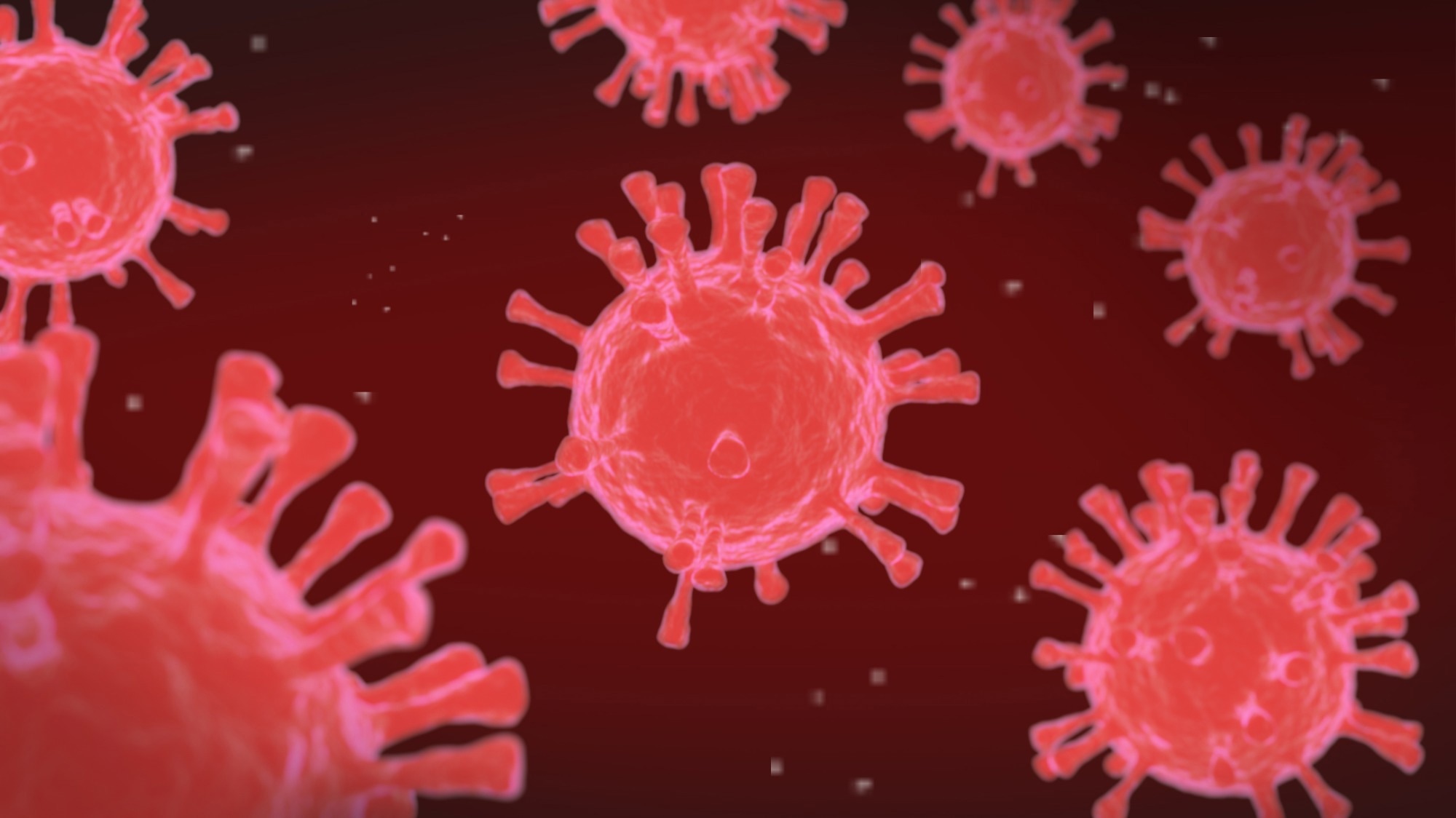The severe acute respiratory syndrome coronavirus 2 (SARS-CoV-2), the causative agent of the coronavirus disease 2019 (COVID-19), possesses a positive-sense ribonucleic acid (RNA) genome and various proteins. Severe cases of COVID-19 involve cytokine release syndrome and acute respiratory distress.
In a recent review published in the journal Cellular and Molecular Immunology, researchers discuss current evidence on the innate immune response to SARS-CoV-2 infection and its evasion strategies. The potential involvement of innate immunity in long-COVID and SARS-CoV-2 vaccines was also reviewed.
 Study: SARS-CoV-2 and innate immunity: the good, the bad, and the "goldilocks." Image Credit: Thidarat Suteeratat / Shutterstock.com
Study: SARS-CoV-2 and innate immunity: the good, the bad, and the "goldilocks." Image Credit: Thidarat Suteeratat / Shutterstock.com
Pattern recognition receptors (PRRs) of SARS-CoV-2
During SARS-CoV-2 infection, the host's innate immune response initiates the early production of type I and type III interferons (IFN-I and IFN-III, respectively). Cellular pattern recognition receptors (PRRs), including retinoic acid-inducible gene I (RIG-I)-like receptors, nucleotide oligomerization domain (NOD)-like receptors, and Toll-like receptors detect viral RNA, thereby triggering a defense mechanism against the virus. These PRRs are advanced surveillance systems specialized in recognizing pathogen-associated molecular patterns (PAMPs) associated with viruses.
IFN inducible antiviral restriction factors
IFN-induced transmembrane proteins (IFITMs) are proteins embedded in the cell membrane that inhibit the fusion of the viral envelope with the host cell membrane. Conflicting evidence exists on the role of IFITMs in inhibiting SARS-CoV-2 entry.
Serine incorporator 5 (SERINC5) is another cell membrane protein known to inhibit the entry of certain viruses. However, the open reading frame 7a (ORF7a) of SARS-CoV-2 antagonizes SERINC5, thus enhancing viral entry.
cGAS-STING axis
The cyclic-GMP-AMP synthase stimulator of IFN genes (cGAS-STING) is involved in cell-to-cell fusion, syncytial pneumocyte formation, and reduced cytokine signaling. This system is also manipulated during SARS-CoV-2 infection.
RNA editing-dependent antiviral innate responses
RNA viruses like SARS-CoV-2 have high mutation rates due to viral RNA-dependent RNA polymerase. However, coronaviruses, which have the largest RNA virus genomes, use proofreading exoribonucleases to lower mutation rates.
Host antiviral proteins, including apolipoprotein B mRNA-editing enzyme, catalytic polypeptide (APOBEC), adenosine deaminase acting on RNA (ADAR), and zeta-chain-associated protein kinase (ZAP) counteract viral replication in different ways. These host-virus interactions impact genome diversity, tissue tropism, and viral evolution, as seen in emerging SARS-CoV-2 variants.
Programmed cell death
Autophagy has dual roles during SARS-CoV-2 infection, as it acts against the virus by inducing cell death and degrading viral particles while also being manipulated by the virus. Viral proteins such as non-structural protein (NSP)15 interfere with autophagy, thereby contributing to viral success.
Excessive autophagy can lead to cellular damage and inflammation, exacerbating severe COVID-19 symptoms. NSP6 triggers pyroptosis, a proinflammatory cell death observed in lung tissues in severe COVID-19, thus suggesting potential targets for therapeutic intervention.
Viral antagonism of cytokine and IFN signaling
Following the identification of SARS-CoV-2 RNA by cytoplasmic RNA sensors, downstream activation occurs through mitochondrial antiviral signaling protein (MAVs) and leads to the activation of interferon regulatory factor (IRF). This sequential process can activate IFN-I and IFN-III, thus initiating an antiviral response. A deficiency in MDA5, MAVS, or RIG-I may contribute to increased SARS-CoV-2 replication upon infection.
SARS-CoV-2 evolution, variants, and increased antagonism
SARS-CoV-2 variants of concern (VoCs) have emerged from the ancestral B.1 lineage with mutations in key viral proteins that affect immune antagonism and evasion. SARS-CoV-2 VoCs exhibit heightened IFN resistance, which impacts their evolution and immune evasion strategies. Variability in IFN sensitivity also exists among VoCs, which suggests a crucial role for innate immune evasion in shaping SARS-CoV-2 evolution.
The innate immune response to vaccines
Vaccination against COVID-19 was a crucial step taken towards pandemic control. Several types of vaccines, including messenger RNA (mRNA), inactivated, viral vector, and protein subunit vaccines, were developed in this period.
Although T- and B-cell responses are well-documented post-vaccination, the role of the innate immune system is less explored. Studies on BNT162b1 mRNA vaccination reveal preferential stimulation of protective classical monocytes and BNT162b1-induced antibodies that activate natural killer (NK) cells more efficiently than natural infection.
Moreover, mRNA vaccines, especially BNT162b2, provide enhanced innate immune responses following the second vaccine dose, which is crucial given impaired IFN-I and III responses to SARS-CoV-2. Innate responses are heightened in those previously vaccinated with AZD1222 and are linked to germinal center function and neutralizing antibody levels.
Long-COVID and the innate immune response
Long-COVID is a chronic, multisystemic condition with diverse symptoms that persist after SARS-CoV-2 infection. Despite progress in understanding the pathophysiology of long COVID, its etiology and the potential role of dysregulated innate immune response remains unclear.
Evidence indicates prolonged elevation of IFN-I, IFN-III, and proinflammatory cytokines in individuals with long-COVID, likely contributing to chronic inflammation and immune dysfunction. Furthermore, mitochondrial dysfunction and reactivation of latent infections have been identified in individuals with long-COVID. Unraveling these mechanisms is crucial for effective management and targeted interventions for the condition.
Conclusions
Examining SARS-CoV-2 and its VoCs has revealed unprecedented immune-evasion strategies. In the future, pharmacological approaches that leverage this understanding could be developed by targeting certain viral proteins or modulating specific pathways. Improved COVID-19 outcomes can be achieved by balancing early protective responses and curbing chronic inflammation.
Journal reference:
- Sievers, B. L., Cheng, M. T. K., Csiba, K., et al. (2023). SARS-CoV-2 and innate immunity: the good, the bad, and the “goldilocks.” Cellular and Molecular Immunology. doi:10.1038/s41423-023-01104-y